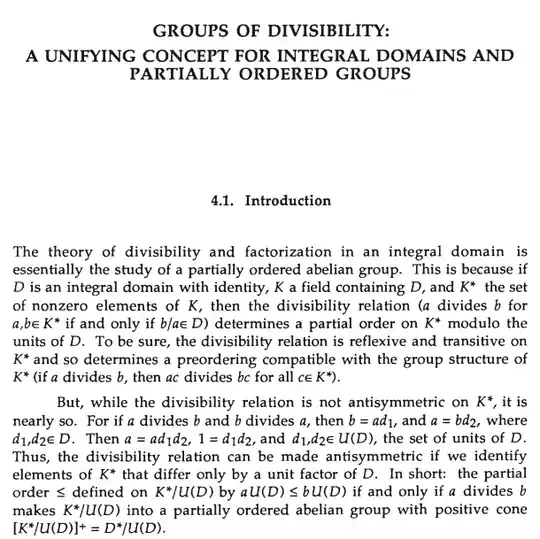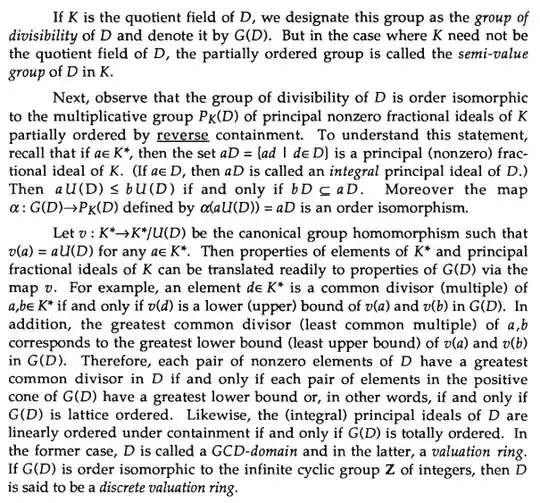Many properties of domains are purely multiplicative so can be described in terms of monoid structure. Let R be a domain with fraction field K. Let R* and K* be the
multiplicative groups of units of R and K respectively. Then
G(R), the divisibility group of R, is the factor group K*/R*.
R is a UFD $\iff$ G(R) is a sum of copies of $\rm\:\mathbb Z\:.$
R is a gcd-domain $\iff$ G(R) is lattice-ordered (lub{x,y} exists)
R is a valuation domain $\iff$ G(R) is linearly ordered
R is a Riesz domain $\iff$ G(R) is a Riesz group, i.e.
an ordered group satisfying the Riesz interpolation property: if $\rm\:a,b \le c,d\:$ then $\rm\:a,b \le x \le c,d\:$ for some $\rm\:x\:.\:$ A domain $\rm\:R\:$ is called Riesz if every element is primal, i.e. $\rm\:A\:|\:BC\ \Rightarrow\ A = bc,\ b|B,\ c|C\:,\:$ for some $\rm\:b,c\in R\:.$


For more on divisibility groups see the following surveys:
J.L. Mott, Groups of divisibility: A unifying concept for
integral domains and partially ordered groups, Mathematics
and its Applications, no. 48, 1989, pp. 80-104.
J.L. Mott, The group of divisibility and its applications,
Conference on Commutative Algebra (Univ. Kansas, Lawrence, Kan.,
1972), Springer, Berlin, 1973, pp. 194-208. Lecture Notes in Math.,
Vol. 311. MR 49 #2712

